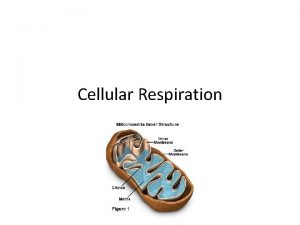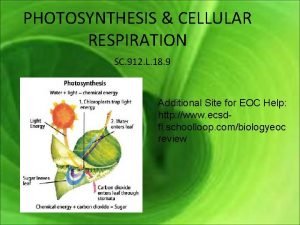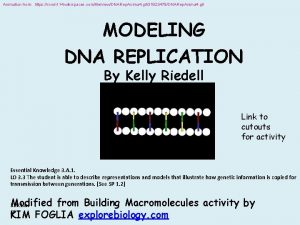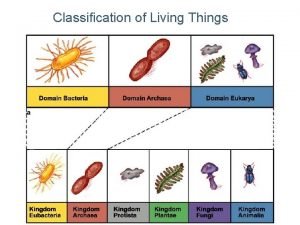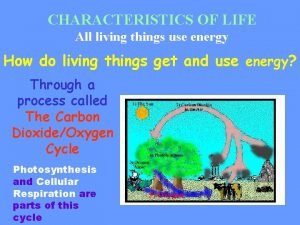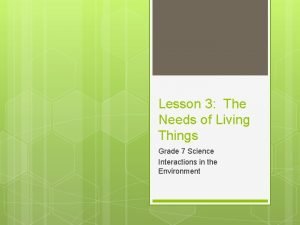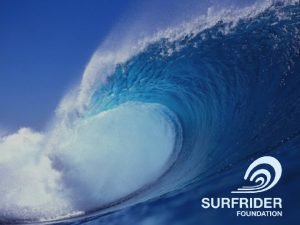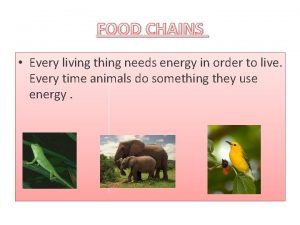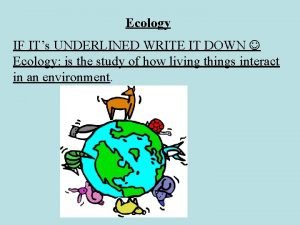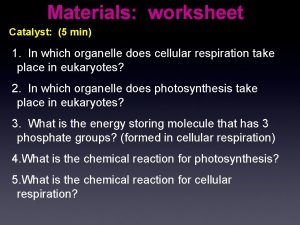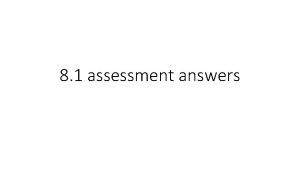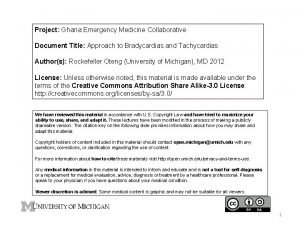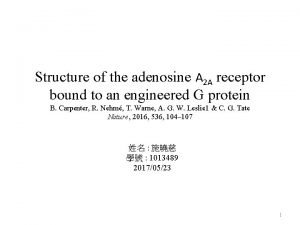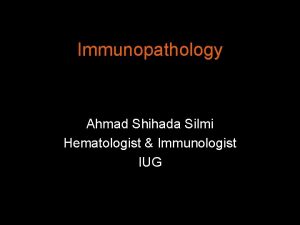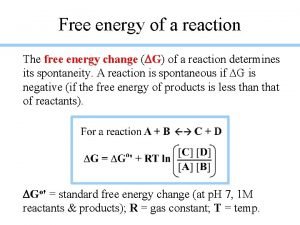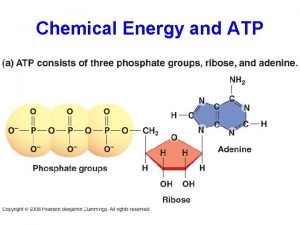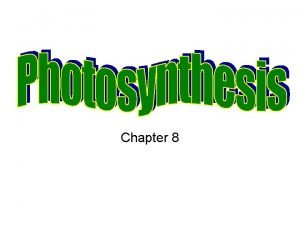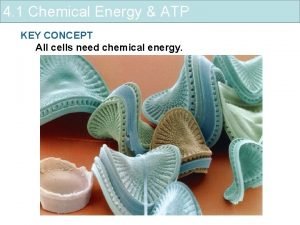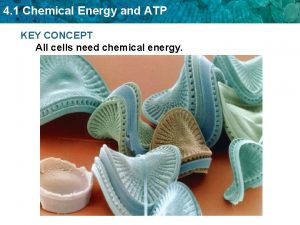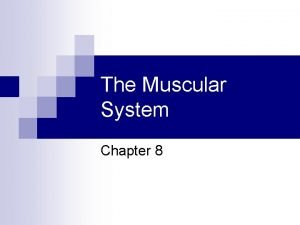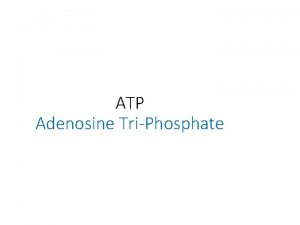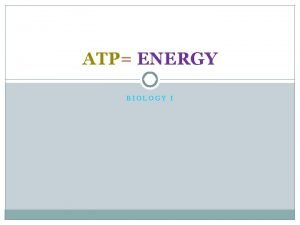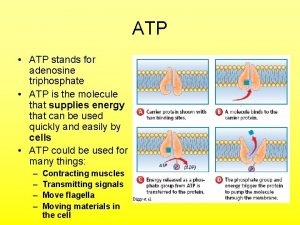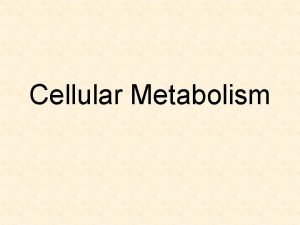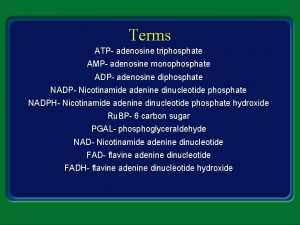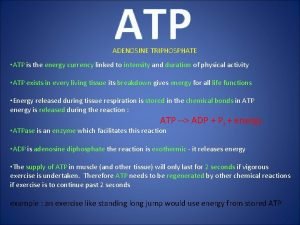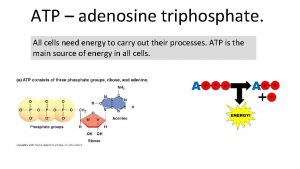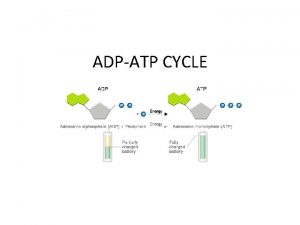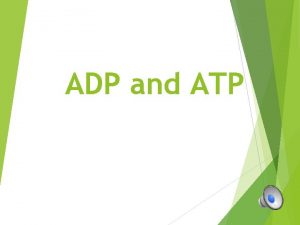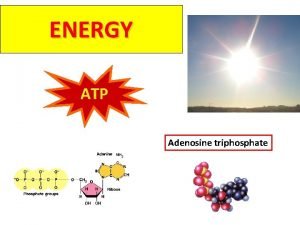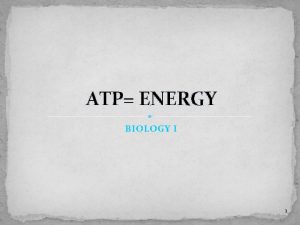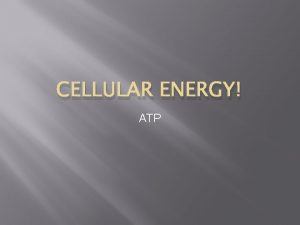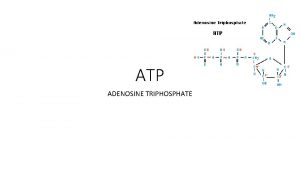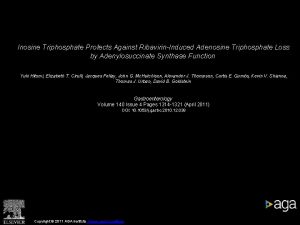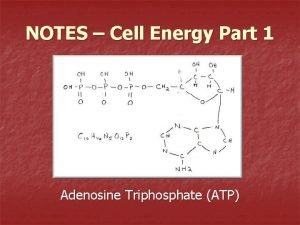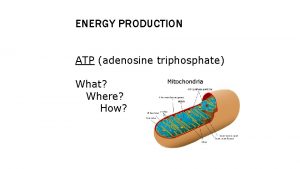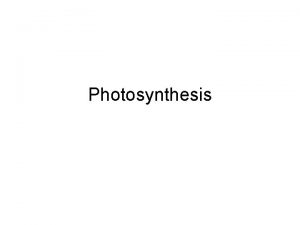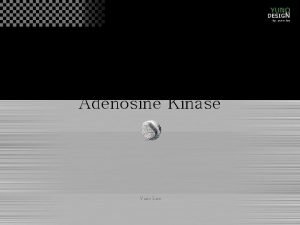ENERGY ATP Adenosine triphosphate All living things need


























- Slides: 26

ENERGY ATP Adenosine triphosphate

All living things need energy to… movement Temperature control growth Active transport

What is the ultimate source of energy? The sun.

Which organism can absorb the sun’s energy directly? plants, algae, cyanobacteria

Plants use the energy in sunlight to make carbohydrates glucose

Carbohydrates contain. . . chemical energy C-H C-C Energy is stored in chemical bonds

Plants make their own food. autotrophs Plants are producers or ________. Bymake what process? ? ? Plants carbohydrates by photosynthesis.

PHOTOSYNTHESIS sun Glucose C 6 H 12 O 6 CO 2 H 2 O O 2

Photosynthesis: 6 CO 2 carbon oxygen dioxide + 6 H 2 O + light energy water C 6 H 12 O 6 + glucose 6 O 2

Which pigment absorbs sunlight? Chlorophyll gives leaves their green color.

In which organelle does photosynthesis take place? chloroplasts Plant cell chloroplast

Leaves cells chloroplasts

STOMATA --- openings on the underside of leaves that allow gases to enter and exit. O 2 CO 2 Photosynthesis

The stomata do not remain open all the time. Guard cells close and open the stomata. Why? Guard cells

The stomata do not remain open all the time. Guard cells close and open the stomata. Why? To decrease transpiration…. H 2 O To decrease the evaporation of water from inside the plant tissues H 2 O

Most plants contain vascular tissue: Xylem: transports water Phloem: transports glucose (food)

Organisms that cannot make their own food heterotrophs are called consumers or ________ Heterotrophs get energy by consuming other organisms Some bacteria Some protists Animals Examples? F U N G I

These organisms are composed of…. macromolecules like…. carbohydrates lipids proteins

Cellular Respiration lipids carbohydrates proteins must be “burned” or broken down to release the stored chemical energy. HOW?

Cellular Respiration GLUCOSE broken down ATP Where in the cell does this occur? occurs in the mighty mitochondria ATP Makes energy for the cell

Cellular Respiration C 6 H 12 O 6 glucose + 6 O 2 oxygen ? 6 CO 2 carbon dioxide + 6 H 2 O + 36 ATP water energy

All living things. . Bacteria, Protists, Fungi, Plants, and Animals. . breakdown glucose for energy. ATP C 6 H 12 O 6 glucose + 6 O 2 oxygen 6 CO 2 carbon dioxide + 6 H 2 O + ATP water energy

chloroplasts Plants make glucose in the _______. glucose

Plants also break down glucose for energy (ATP) in the _______ mitochondria ATP glucose

STOMATA --- openings on the underside of leaves that allow gases to enter and exit. Cellular Respiration CO 2

ATP is the energy molecule. ATP powers the cell. ATP
 Adenosine triphosphate (atp)
Adenosine triphosphate (atp) The smallest living unit of all living things is
The smallest living unit of all living things is How to remember the 7 life processes
How to remember the 7 life processes What function does atp carry out in living things
What function does atp carry out in living things Blue things
Blue things Nucleoside triphosphate in dna replication
Nucleoside triphosphate in dna replication 8 levels of classification
8 levels of classification Cell tissue organ organ system organism
Cell tissue organ organ system organism Life cycle of all living things
Life cycle of all living things What are the 5 basic needs of all living things
What are the 5 basic needs of all living things Are all living things based on the metric system
Are all living things based on the metric system Throwaway living
Throwaway living Gets its energy from eating living things
Gets its energy from eating living things Producer food chain
Producer food chain Gets its energy from eating living things
Gets its energy from eating living things How living things obtain energy worksheet answers
How living things obtain energy worksheet answers How do heterotrophs and autotrophs differ
How do heterotrophs and autotrophs differ Adenosine vs amiodarone
Adenosine vs amiodarone Deoxyribonucleotide adenosine
Deoxyribonucleotide adenosine Adenosine
Adenosine Factorig
Factorig Phosphoanhydride group
Phosphoanhydride group Atp energy
Atp energy How does atp release energy
How does atp release energy Is atp chemical energy
Is atp chemical energy Is atp chemical energy
Is atp chemical energy Which biochemicals provide the energy to regenerate atp
Which biochemicals provide the energy to regenerate atp
